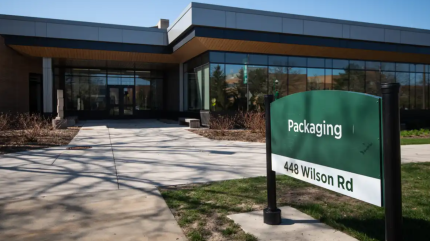
In response to the mounting challenge of plastic waste in the United States, Michigan State University (MSU) has launched a new research initiative aimed at developing sustainable solutions for the packaging sector.
The new Centre for Plastic, Paper and Hybrid Packaging End-of-Life Solutions (C3PS) has been established with funding from the U.S. National Science Foundation (NSF) and is designed to find new ways to handle packaging waste at the end of its lifecycle.
The move comes amid growing concerns over the scale of plastic pollution in the U.S., where around 40 million tons of plastic waste are produced each year.
Packaging accounts for nearly 40% of this, yet only an estimated five percent is recycled, with the remainder contributing to landfill and pollution by micro- and nano-plastics.
A first-of-its-kind centre focused on packaging waste
C3PS is the first Industry-University Cooperative Research Center (IUCRC) backed by the NSF specifically aimed at addressing packaging end-of-life issues.
Based at MSU’s School of Packaging, the centre will work with Western Michigan University and six other academic partners, bringing together researchers, government bodies and industry stakeholders.

US Tariffs are shifting - will you react or anticipate?
Don’t let policy changes catch you off guard. Stay proactive with real-time data and expert analysis.
By GlobalDataThe centre’s work is structured around three main objectives: conducting research that serves the needs of companies across the sector, advancing U.S. competitiveness in packaging innovation, and training the next generation of professionals in sustainable manufacturing practices.
The centre will be led by Muhammad Rabnawaz, Ph.D., associate professor at MSU, who described the project as an effort to build a circular economy for packaging. “C3PS seeks to advance the science and engineering of ‘cradle-to-cradle’ packaging,” he said, referring to the design of materials that are recyclable, biodegradable, or reusable from the outset.
Key research areas: plastics, paper and hybrid materials
The centre’s research will be focused on two core streams. The first is the development of recyclable and biodegradable plastic packaging, alongside innovations to improve existing recycling technologies and reduce the cost of processing plastic waste.
The second stream targets paper and hybrid paper-plastic packaging.
Research in this area will involve creating safe, recyclable alternatives and new methods for handling emerging materials that are difficult to separate and recycle under current systems.
By working on both material development and waste processing technologies, C3PS aims to support both the upstream design of packaging and the downstream systems that manage its disposal.
Training the next generation and expanding global reach
Alongside its technical research, C3PS will play a role in workforce development, involving students from eight universities in hands-on research. This approach is designed to build a skilled workforce that understands the challenges of sustainable packaging.
The centre is multidisciplinary, bringing together experts in fields ranging from materials science and biodegradation to AI, recycling systems and regulatory science. International collaboration will also be a feature, with advisors from outside the U.S. contributing to ensure global relevance.
MSU officials say the centre is the result of two years of planning, including efforts to build industry partnerships and secure funding. Interim director of the School of Packaging, Laura Bix, said the centre represents a significant shift for the field. “It’s an inflection point not just for MSU, but for packaging research more broadly,” she noted.
Looking ahead, Rabnawaz said there are plans to expand the centre’s reach by increasing faculty and growing its network of industry partners.
The ambition is to establish C3PS as a national hub for innovation in packaging sustainability.



